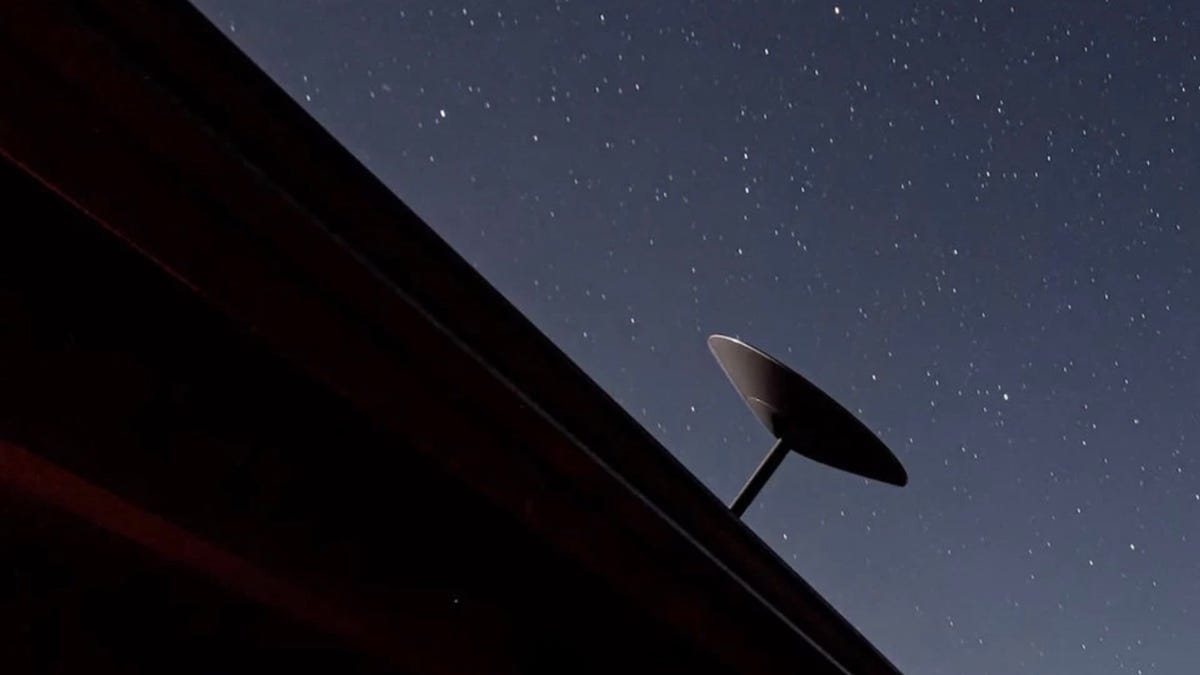With a 30 degree minimum elevation angle, a ground relay can connect satellites up to 2*550km*cos(30) or 950 km apart (inverse of sattelite). So user term-sat-ground-sat-ground max distance is 4 hops of 550km*cos(30) or 1900km . Australia is roughly 4000x3000. 35 (7x5) relays 500 km apart would cover the whole thing.That would be a lot of ground stations to deploy, and fast, would it not ?
Welcome to Tesla Motors Club
Discuss Tesla's Model S, Model 3, Model X, Model Y, Cybertruck, Roadster and More.
Register
Install the app
How to install the app on iOS
You can install our site as a web app on your iOS device by utilizing the Add to Home Screen feature in Safari. Please see this thread for more details on this.
Note: This feature may not be available in some browsers.
-
Want to remove ads? Register an account and login to see fewer ads, and become a Supporting Member to remove almost all ads.
-
Tomorrow at 1PM PDT we will be discussing the latest Tesla Shareholder Meeting on the TMC Podcast. You can watch live on YouTube or X and participate in the chat.
You are using an out of date browser. It may not display this or other websites correctly.
You should upgrade or use an alternative browser.
You should upgrade or use an alternative browser.
dhanson865
Well-Known Member
I'm patient enough to just wait 24 hours to find out.If it is not lasers, then perhaps they are able to use other/existing ground stations. How else to explain the rapid shift in coverage ?
But I'd point out that new satellites get into position and start sending/receiving daily (or almost every day, with some days having more than one).
I wouldn't call it a rapid shift in actual coverage. Just them turning on a new region. More an administrative shift than a literal coverage shift.
Last edited:
petit_bateau
Active Member
Thank you for the sum. I admit to being lazy and en route to bed. That's a lot of base stations to build out if that is how they are enabling these regions.. I guess as @dhanson865 says if we are patient we'll find out soon enough if it is that, as opposed to merely switching on coverage in the normal way.With a 30 degree minimum elevation angle, a ground relay can connect satellites up to 2*550km*cos(30) or 950 km apart (inverse of sattelite). So user term-sat-ground-sat-ground max distance is 4 hops of 550km*cos(30) or 1900km . Australia is roughly 4000x3000. 35 (7x5) relays 500 km apart would cover the whole thing.
That was a lazy, worst case number. Halfish of Australia already had coverage, so maybe 10-20 relays would be sufficient (if laser links are really not in play)Thank you for the sum. I admit to being lazy and en route to bed. That's a lot of base stations to build out if that is how they are enabling these regions.. I guess as @dhanson865 says if we are patient we'll find out soon enough if it is that, as opposed to merely switching on coverage in the normal way.
Store and forward would also work, but ping would be bad.
dhanson865
Well-Known Member
I looked through his posts and see he works in IT in Australia but don't see a follow up post yet.
reddit post
reddit post
dhanson865
Well-Known Member
I looked through his posts and see he works in IT in Australia but don't see a follow up post yet.
reddit post
His reply
Sorry - I’m not sure what the delay is on the info getting published on the ACMA website. Over my pay grade and posting any thing on a public forum that’s yet to be made available to public could cost me my job..
It’s nothing super crazy - legal paperwork and updating policies to be honest- just keep a eye on the ACMA newsletter this month
His reply
So sounds like it was just regulatory approval that was holding things up. Which is actually what 99% of Starlink coverage and bandwidth issues come down to. East coast of the US has bandwidth constraints due to GEO sat frequency squatting. People wonder why country X doesn’t have Starlink, it’s because of regulatory delays. The only real areas that can’t be well serviced by Starlink now are two bands in the northern and southern hemispheres, and satellites are coming that will fix that soon.
East coast of the US has bandwidth constraints due to GEO sat frequency squatting.
Interesting, I hadn't heard that before. @wk057 that might explain the performance you have seen and why SpaceX hasn't resolved it yet.
Not sure if this is correct or not, since I can get occasional fantastic service off-peak, and before the large rollout I was getting consistently decent service 24/7.
Really feels like its just oversold. If it were a spectrum issue I'd have expected it to be consistently bad from the beginning.
Really feels like its just oversold. If it were a spectrum issue I'd have expected it to be consistently bad from the beginning.
Not sure if this is correct or not, since I can get occasional fantastic service off-peak, and before the large rollout I was getting consistently decent service 24/7.
Really feels like its just oversold. If it were a spectrum issue I'd have expected it to be consistently bad from the beginning.
Doesn't reduced spectrum = reduced peak bandwidth? If the spectrum they are able to use is saturated it wouldn't matter how much ground station capacity they add, it wouldn't increase peak capabilities.
Right, but the available bandwidth used to be good.Doesn't reduced spectrum = reduced peak bandwidth? If the spectrum they are able to use is saturated it wouldn't matter how much ground station capacity they add, it wouldn't increase peak capabilities.
Now it's dropping to unusable for him sometimes. That points to overallocation of available bandwith.
If GEO reduces the bamdwidth and thus number of subscribers possible, SpaceX should take that into account.
Or their allocation algorithm has issues...
Interesting, I hadn't heard that before. @wk057 that might explain the performance you have seen and why SpaceX hasn't resolved it yet.
This is where I got that info from: https://mikepuchol.com/modeling-starlink-capacity-843b2387f501
I highly recommend reading the whole article - it is very technical. Quite a ways down, it shows the restricted Eastern US and says about it:
Notice how a large portion of the South and Midwest shows as “Expanding in 2023”, and how it matches the result of our latest simulation run? The primary reason for this is not satellite density — you can run the simulation any time of the day and get the same result — but the fact that many gateways in that region operate at 50% capacity, due to spectrum priority usage by a prior licensee.
Definitely weird, because I feel like that should have been a known thing and mitigated before they even designed the hardware. But who knows.
Not sure what you’re talking about? Frequency limitations? Note that the rest of the world doesn’t have capacity issues.
Newly freed citizens of Kherson calling loved ones via Starlink:
View attachment 874285
(picture by Lynsey Addario for The New York Times)
a slitely off topic question
I used to use around 200-300 meg a month, got a roommate and now use 1.5 - 1.7 terabytes/month
how is Starlink with those figures?
(If I had Starlink and a powerwall for my PV array, I would not have lost both power and internet for 11+ days from hurricane Ian and either I move inland and north or that happens again unless)
(yeah, i could look it up but real world users have actual experience and youse guys are kinda "offline memory")
I used to use around 200-300 meg a month, got a roommate and now use 1.5 - 1.7 terabytes/month
how is Starlink with those figures?
(If I had Starlink and a powerwall for my PV array, I would not have lost both power and internet for 11+ days from hurricane Ian and either I move inland and north or that happens again unless)
(yeah, i could look it up but real world users have actual experience and youse guys are kinda "offline memory")
You might get throttled if you exceed 1 TB.a slitely off topic question
I used to use around 200-300 meg a month, got a roommate and now use 1.5 - 1.7 terabytes/month
how is Starlink with those figures?
(If I had Starlink and a powerwall for my PV array, I would not have lost both power and internet for 11+ days from hurricane Ian and either I move inland and north or that happens again unless)
(yeah, i could look it up but real world users have actual experience and youse guys are kinda "offline memory")

Starlink US residential customers are getting a limit on their high-speed internet
Users may find themselves on the 'Basic Access' service if their usage exceed 1TB of data in a month.
 www.zdnet.com
www.zdnet.com
dhanson865
Well-Known Member
User that just setup his dish to test at 63.75N.

www.reddit.com/r/Starlink/comments/yzstpq/starlink_finally_available_in_northern_canada/

www.reddit.com/r/Starlink/comments/yzstpq/starlink_finally_available_in_northern_canada/
Similar threads
- Replies
- 32
- Views
- 2K
- Replies
- 21
- Views
- 1K
- Replies
- 17
- Views
- 972


